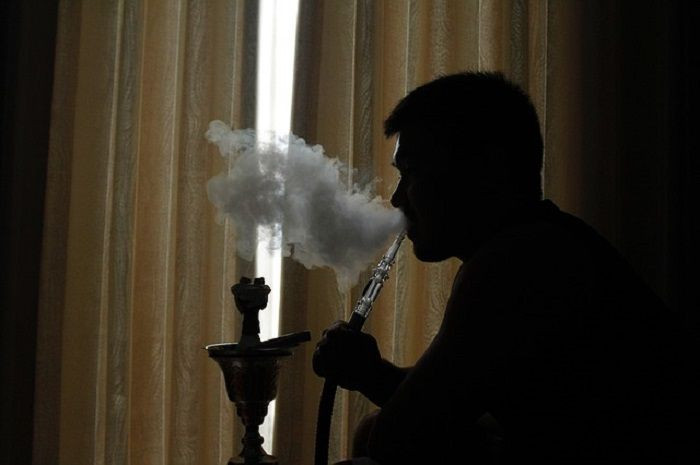Secondhand Smoke In Hookah Bars May Pose A Health Risk For Workers

Despite anti-smoking regulations that New York City has passed to protect workers from the harmful effects of secondhand smoke, employees at hookah bars are being exposed to hazardous levels of carbon monoxide and nicotine — toxins commonly found in tobacco smoke, according to new research published in Tobacco Control.
The general belief that hookah — a practice that involves smoking shisha, a fruit-flavored, often tobacco-based material using a water pipe — is a “safe” alternative to tobacco smoking is a significant reason the bars have become so popular. The perception of safety has enabled many hookah businesses to get around New York City legislation that bans smoking and the use of electronic cigarettes in virtually all workplaces.
“Hookah use is often exempt from clean indoor air laws that protect people from secondhand smoke,” senior study author Dr. Terry Gordon said in a statement.
Gordon and his colleagues investigated indoor air quality in hookah bars and the health effects of secondhand smoke on 10 workers. Two of the 10 had carbon monoxide readings greater than 90 parts per million, which is similar to those seen in heavy tobacco smokers. The workers also had higher levels of inflammatory signaling proteins, including interleukin, and tumor necrosis factor, in their blood. Although these proteins are part of normal immune responses, they are also central to heart disease and cancer when their levels are too high, researchers said.
At the hookah bars studied, indoor air pollutant concentrations varied, but were directly proportional to the number of people smoking and water pipes used. Researchers also noted that many hookah lounges had no open windows or doors to ventilate the smoke.
“Ours is the first study that links poor hookah bar air quality to damaging effects in workers, and the results recommend closer monitoring of this industry to protect the public,” Gordon said.
New York City has about 140 hookah lounges that are usually frequented by people of Middle Eastern and Indian descent, and is increasing in popularity among young people of all backgrounds.
Secondhand smoke is the third leading preventable cause of disability and early death in the United States and is responsible for more than 7,300 lung cancer deaths and nearly 34,000 heart disease deaths among Americans who have never picked up a cigarette, according to the Centers for Disease Control and Prevention.
“Our findings challenge the belief that secondhand exposure to hookah smoke is safe,” Gordon said. “We hope that our paper leads to larger studies of indoor air quality and regulations that protect workers and patrons.”
Researchers recommend closer monitoring of the hookah bar industry to protect its employees as well as the public.
Source: Zhou, S. Behrooz L, Weitzman M, et al. Secondhand Hookah Smoke: An Occupational Hazard for Hookah Bar Employees. Tobacco Control. 2016.



























